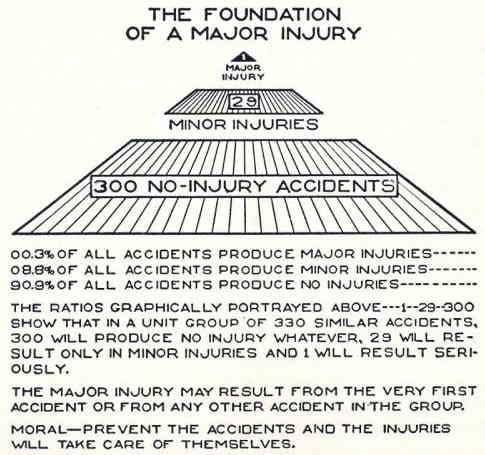A Dependable Problem

We end up writing about resistance to change rather often because we see it often.
Resistance to change is a rather significant problem every aviation safety management system (SMS) implementation deals with. Judging by the large volume of users who read blog articles about this – perhaps such as yourself – our feelings and observations are spot on.
Resistance to aviation SMS is usually more common in newer, immature SMS, and the level of resistance is a strong indicator of how healthy an SMS is. Nonetheless, healthy SMS can begin to experience resistance as well, such as
- After high employee turnover;
- Change in upper-level management; or
- Change to the aviation safety manager.
Related Articles on Resistance to Aviation SMS
- How to Reduce Resistance to Aviation SMS With Difficult Employees
- 3 Tips to Discover Resistance to Aviation SMS
- Checklist to Quantify Resistance to Your Aviation SMS
Just consider this scenario as an example: Safety manager John Doe has worked with an organization for many years. John is respected and well-liked by most of the organization’s employees. John Doe retires, and a new, younger safety manager, with some more progressive ideas about aviation SMS, replaces John Doe. Need I say more?
And to use a rather crude expression, though safety managers who deal with resistance would probably agree: resistance sucks. It makes you feel like your efforts to improve the aviation SMS are meaningless.
A feeling of meaninglessness, by the way, is the quickest road to burn-out I can think of.
Symptoms of Resistance

- Sullenness and apathy at safety meetings
- High employee turnover
- Unnatural and consistently low reporting numbers
- Department heads discouraging reporting of minor incidents to safety reporting system
- Management's casual attitudes toward close calls
- Management resistance to treat "close calls" through established risk management processes
- Department heads neglecting to respond to assigned safety tasks
- Risk management tasks consistently overdue
- Poor participation in safety surveys
- Low read rates for safety communications
- Graffiti on safety promotion posters
- The disparity between trained policy and procedures and actual practice
- Open quarrel and/or objections regarding the organization or the SMS
In general, open resistance such as objections/quarreling is fairly hard to miss. Where resistance gets tricky to identify is behavior involving:
- Subverting the SMS in favor of "informal" methods of dealing with safety issues
- Apathetic response to assigned SMS requirements
When I talk about “ferreting out” resistance in aviation SMS, I mean exposing these types of areas that would otherwise go unaddressed. A common story usually looks something like this: a department head instructs his/her employees – either through influence or suggesting retaliatory means – to report issues directly to them rather than through the established aviation SMS channels. It’s generally passed off as an "old school" way of doing things.

In other words, subversion.
Department heads may believe they are doing everyone a favor and avoiding "busy work." Without realizing it, these department heads are stealing opportunities for the organization to implement and document risk controls to prevent "The Accident" that we all know is coming, but we don't know to which company or when.
For the SMS to work, close calls must be processed just as any other safety event. Have you heard of the Heinrich/Bird Accident Pyramid? In the 1930s, an occupational safety researcher wrote a book on industrial accident prevention. In the book, he illustrates the "incident/accident pyramid." Many of us call it the:
- Safety accident triangle; or
- Safety accident pyramid.
I've included the safety pyramid at the right. Heinrich's research claims that for every major accident or incident, there will be approximately 600 close calls leading up to the major event. Heinrich was quick to point out that you don't have to experience 600 close calls before "The Accident" strikes. "The Accident" could be the very first event.
The moral of this story is that close calls are important and EVERY close call should be reported and treated through your SMS' reactive risk management processes. Educate those "old school" managers of the importance of running ALL of their close calls through the SMS.
Related Aviation Risk Management Articles
- What Is Reactive Risk Management (Why It’s Essential for Aviation SMS)
- Difference Between Reactive, Predictive and Proactive Risk Management in Aviation SMS
- How to Practice Reactive, Proactive, and Predictive Risk Management in Aviation SMS
Type One: The “Old School” Manager
Simply dismissing behaviors as old-school mentality, “deal with it yourself,” is the same kind of practice from the 70s and 80s, when aviation accidents were dreadfully higher than today with the migration to modern aviation SMS.
It’s also a practice that is usually just an excuse for a manager to exercise much more control than he/she is allowed. The manager who does this is probably influential and very well-liked in the organization, and employees are usually reticent to be perceived as a “whistle-blower,” – nevertheless such behavior from a manager is intolerable for safety. As said, just look at safety data from the 1960s through the 1980s.
This type of behavior is also more prevalent in Western cultures where initiative is highly prized as a personality trait. Personally, I have considerable initiative. If I see a problem, I don't wait for somebody to fix it. I'll fix it when I have the time and ability. Usually, I keep my mouth shut about my informal corrective actions. I don't need additional praise from management. It's what I was hired to do. While this is admirable behavior, managers need to be aware of the potential consequences of their silent, informal risk management activities.
Enough said.
While we do not stereotype these resistant managers, there is a rather identifiable trend in the type of manager who practices this:
- Male
- Over 50 years of age
- Originally from U.S. or Canada where ingenuity is valued and human resources are lacking
- Slow or unwilling to adapt to newer technologies, such as aviation SMS software
- Very knowledgeable about processes and documentation
- Outwardly displays good team behavior
- Many years of relevant industry experience
Changing the attitudes of these old-school managers is very slow unless you can "educate" them on the reasoning behind why they should change their informal risk management activities. SMS training is not just for line-level employees. These types of managers must internalize the need for SMS in our aviation "system." SMS is not about hobbling economic activity, but improving safety and assuring the public that the system is being monitored and is as safe as reasonably practical.
The FAA states the objective of SMS very nicely in their regulatory documentation:
The objective of Safety Management Systems (SMS) is to proactively manage safety, identify potential hazards, determine risk, and to implement measures that mitigate the risk (emphasis added). The FAA envisions operators being able to use all of the components of SMS to enhance a carrier’s ability to identify safety issues and spot trends (emphasis added) before they result in a near-miss, incident, or accident. For this reason, the FAA is requiring carriers to develop and implement an SMS.
Source: Federal Register / Vol. 80, No. 5 / Thursday, January 8, 2015 / Rules and Regulations
"Old school" managers may be informally implementing mitigation measures to control risk, but they are robbing the SMS of valuable data that is necessary to spot trends and possibly prevent "The Accident."
Related SMS Trend Analysis Articles
- Aviation Safety Managers' Best Friend - Trending Charts
- How to Use Trending Charts in Aviation SMS
- Six Steps How to Perform Trend Analysis in Aviation SMS
Apathy *IS* Active

When we think of apathy, we generally think of it as a “passive” thing. But in truth, in aviation SMS, apathy must always be viewed as a choice to either:
- report or not report, or
- be involved or not involved.
Just think about your own life – how many things do you not care about, or wish you didn’t have to do, but DO anyway because it’s necessary? Probably a lot of things. Aviation SMS is a necessity. While the ideal scenario is employees who report and involve themselves because they *want* to, apathy is absolutely not an excuse for non-participation.
My mantras about apathy:
- Level of feeling is never an excuse for the level of action
- Apathetic employees can still be involved employees
- "To do” or not “to do” activity is always active one way or the other, regardless of the reasons
This is a hard line that aviation SMS managers need to draw. I know – it’s easy to be slightly easier on people who “don’t care” than on people who actively seem to seek out resistance. But when it comes right down to it, an employee is either involved and active, or dormant. That certainly sounds and feels like a hard-nosed approach. But for the sake of the aviation SMS implementation, it’s necessary.
Helpful Tools
I’ll be brief here. Here are 4 essential tools for quick discovery.
- Experience
There’s no substitute for it. Experienced managers usually are able to “sense” or “feel” resistance without having to do any serious digging to make sure that is actually the case. In my experience, safety managers work in a rather intimate community – as in, people seem to all know each other – and if you are seeking out the advice of a more experienced safety manager in cases of resistance is a good idea.
- Anonymous online safety survey
A rather crafty way to employ good safety surveys is to publish them to one department at a time. It’s still anonymous, but you can get a quantifiable and qualitative beat on each department’s feeling about the SMS.
- Informal chatting
Show your face. Talk to people. Let them know you are around and active. Being present can do wonders for letting people know that SMS is not a passive force in the organization.
- Statistical data
Having access to data is an instrumental part of being able to see what/where/when/why about reporting. The more specific the data, the more helpful. For aviation service providers managing their SMS in spreadsheets, you are at a disadvantage. There are too many limitations for using spreadsheets in a long-term scenario.
If you are serious about your SMS and demonstrating continuous improvement of the SMS, I recommend an SMS database. I'm a data management expert and I also understand SMS documentation requirements. A professional SMS requires professional tools. Would you want to fly with an airline that builds its own aircraft? You may, or may not. Get an SMS database and be more professional in managing the SMS. There are benefits!
Related Aviation SMS Database Articles
- What Is an Aviation Safety Database
- How to Choose the Best Aviation Safety Database Software
- How to Manage Aviation SMS Without Complex SMS Databases
Final Thought: Overcoming Resistance
Overcoming resistance is another topic entirely. Doing so can be extraordinarily frustrating for safety managers.
Good safety managers are cautious and suspicious. Resistance can and does cripple aviation SMS -- we might even call it the SMS nemesis. Resistance should always be at the back of a safety manager's mind, even if all seems well.
Other than that, I wish you the best of luck.
Safety Surveys Help Determine Resistance to SMS
Last updated in April 2025.






